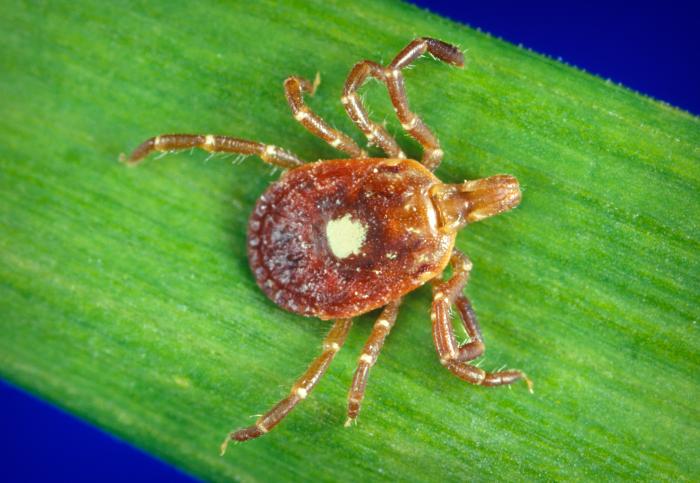Lone Star Ticks are an Aggressive Vector for Several Serious Diseases
When we think of insect bites that can transmit serious diseases, we often think of mosquitoes, a well-known vector for West Nile, Zika, and Eastern equine encephalitis as well as emerging diseases in the US, such as Dengue Fever and Chikungunya.
When we think of ticks, it’s the deer tick that likely comes to mind, as it’s the primary carrier of Lyme disease.
But there is another tick, the Lone Star Tick (also known as the Turkey Tick or Northeastern Water Tick), that can pose a unique health threat across the Gulf states, in the lower Midwest, across Appalachia, and up the eastern seaboard as far north as Massachusetts.

The bite of the Lone Star Tick is responsible for at least six different diseases found in the US, including the spread of Ehrlichiosis (a bacterial infection), Tularemia (a bacterial infection also known as Rabbit Fever), Southern tick-associated rash illness (STARI), Heartland virus (HRTV), and Alpha-gal allergy (also known as Mammalian Meat Allergy or MMA).

Lone Star Tick Bites can Cause Alpha-gal Syndrome (AGS), also known as Mammalian Meat Allergy (MMA)
This last condition, Alpha-gal allergy, is the focus of this report.
Worryingly, some of the individuals who are bitten by Lone Star Ticks develop a severe case of Alpha-gal allergy – also known as Mammalian Meat Allergy or MMA).
These patients suffering from AGS can experience a severe reaction several hours (typically 3 – 6 hours) after eating red meat products (e.g. meat harvested from mammals) such as beef, pork, or game.
These possible AGS reactions include nausea and vomiting, skin rashes, breathing difficulty, dizziness or fainting, low blood pressure, and possible signs of anaphylactic shock.
Understandably, patients with AGS who have this reaction start to lose their appetite for meat products entirely.
(To clarify: AGS patients eating food derived from non-mammalian sources, such as fish, birds, reptiles, or invertebrates, including seafood or insects, do not have an AGS-related allergic reaction.)

What is the Underlying Mechanism of Alpha-gal Syndrome (AGS) that Causes Meat Allergies?
The possible connection between human tick bites and the onset of Mammalian Meat Allergy (MMA) was first identified in 2002.
However, researchers were initially unsure of the actual allergy mechanism, today known as Alpha-gal Syndrome (AGS).
The first step in understanding the cause of this meat allergy began in 2006 when researchers Thomas Platts-Mills and Scott Commins at the University of Virginia Health System in Charlottesville, Virginia were investigating cases of patients having an allergic reaction to the cancer drug cetuximab.
The affected patients were found to be producing Immunoglobulin E (IgE) antibodies in response to the alpha-gal carbohydrate in cetuximab – which was suspected of creating the allergic reaction to the drug.
In a coincidental case of fortuitous misfortune, laboratory researcher Platts-Mills was bitten by a tick and subsequently developed the delayed-onset mammalian meat allergy when he consumed beef or pork.
In a paper published in the Journal of Allergy and Clinical Immunology, Platts-Mills and Commins were able to describe the possible connection between mammalian oligosaccharide epitope alpha-gal and the overproduction of Immunoglobulin E (IgE) antibodies causing the mammalian meat allergy.
This tick bite connection to the condition was confirmed in a 2019 paper written by a consortium of researchers at the University of Southern Mississippi, the University of North Carolina Chapel Hill, and the University of Georgia. (doi 10.3389/fimmu.2019.01056).
Researchers used a combination of carbohydrate and immunoproteomic analysis to investigate whether any of four tick species (including the Lone Star Tick, the Gulf Coast Tick, the American Dog Tick, and Black-Legged Deer Ticks) carried the oligosaccharide galactose-α-1, 3-galactose (α-gal) carbohydrate (or not) and whether they could transmit it to humans via tick bites.
After investigating the tick salivary glands, they found that among the four species studied, only the Lone Star and Black-Legged Deer Ticks had evidence of α-gal in their saliva. These tick saliva samples were then extracted and exposed to basophils (a type of white blood cell) taken from the plasma of α-gal allergic patient subjects.
The tick saliva containing α-gal created a positive response in the basophils, indicative of an immune reaction, which means that Lone Star and Black-Legged Deer Ticks are a likely cause of mammalian meat allergy in humans.

What Clinical Testing Protocols Can Identify Alpha-gal Syndrome (AGS) and Can it Be Reversed?
Now that we know the underlying mechanism of Alpha-gal Syndrome (AGS), can its presence in patients be confirmed (e.g. diagnosed) using clinical testing protocols?
Furthermore, is it possible to reverse the allergy (e.g. desensitize patients from reactions to mammalian meat) or possibly even prevent the onset of AGS in the first place?
The first challenge in diagnosing patients with Alpha-gal Syndrome (AGS) is the delayed onset. Many patients who first experience a severe allergic reaction to mammalian meat often won’t associate it with what they ate due to the hours-long delay (typically 3 – 6 hours) before the patient becomes ill.
However, once the connection is made, the patient’s care provider can order a series of allergy tests to confirm the presence of AGS.
Diagnosis of AGS can be confirmed with a conventional skin prick test (also known as a scratch test) or a prick-by-prick test, in which the scalpel is first exposed to the allergen (in this case, mammalian meat products), then the human skin.
Other tests include performing a (blood) serum immunoglobulin E (IgE) antibodies test to identify the presence of galactose-a-1 or 3-galactose.1 carbohydrate, which would be indicative of an AGS allergy.
Unfortunately, the current standard of care for AGS patients is limited to managing any symptoms as they arise and restricting the patient’s diet to avoid the consumption of any mammalian meat or meat-derived products.

In a Warming World, Lone Star Ticks are Predicted to Move Northward. Are there any New Clinical Treatments on the Horizon?
What about desensitizing patients who have AGS? Or preventing the condition in the first place?
Laboratory research is ongoing.
One promising current project is taking place at the University of Michigan, where researchers are investigating new immunotherapy methods to prevent the onset of AGS.
The scientists are experimenting with biodegradable nanoparticles that contain Alpha-gal glycoproteins. These nanoparticles are injected into mice who have no history of exposure to the tick bite protein that causes the Alpha-gal allergy.
Among the mice subsequently exposed to tick bites, 10 out of 12 mice previously exposed to nanoparticles containing Alpha-gal glycoproteins had a significantly lower immune reaction after having been bitten by the ticks.
It is hoped that this approach could lead to a human allergy shot that could prevent humans bitten by ticks from becoming sensitive to eating mammalian meat.
This would be timely because habitat researchers are now predicting that warmer temperatures due to climate change will allow ticks, such as the Lone Star Tick, to move further north, putting the northern midwestern states and the remainder of New England in the crosshairs of Alpha-gal Syndrome (AGS). (doi 10.1371/journal.pone.0209082)

Formaspace is Your Laboratory Research Partner
Evolving Workspaces. It’s in our DNA.
Talk to your Formaspace Sales Representative or Strategic Dealer Partner today to learn more about how we can work together to make your next construction project or remodel a success.











